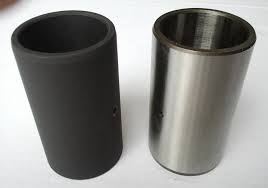INTRODUCTION
Manganese phosphate coating has the highest hardness and excellent corrosion and wear resistances properties than any other phosphate coating.
Manganese phosphate coating is extensively employed to enhance the sliding properties of engine, gear, and power transmission systems. The use of manganese phosphate coatings for improved corrosion resistance can be found in virtually all branches of the metal working industry. Typical examples can be noted in motor vehicle components,brake and clutch assemblies, engine components, leaf or coil springs, drill bits, screws, nuts and bolts, washers, anti-vibration washers, tools, magnet cores,casting interiors and many other small items.
Manganese phosphate coating confers good corrosion resistance, whether a post-treatment such as oil application is to be used or not, and it can be applied by the Spray or immersion method. The processing sequence can be summarized as follows:
The degreasing and cleaning are usually done by strongly alkaline cleaners at concentrations of 8-10% at a temperature of 70-80°C. Treatment times range from 25-30 minutes and the optimum time depends upon the surface condition.
The phosphated components, after drying, are immersed in the oil or lubricant baths for 0.5-2 minutes. The thickness of the culminating oil film depends on the oil used and its concentration.
SCOPE
HAMBOND-M is designed to produce heavy manganese phosphate coating on iron and steel surfaces at 95 °C which conforms to the British Standard 3189. In practice, the weights of coatings are usually in the range 10 to 20g/m2. Such coatings, when sealed with oil, greases or wax provide excellent protection against corrosion.
BENEFITS
- Manganese phosphate coatings are heavier and courser than zinc phosphate.
- Manganese phosphate is ideal for service applications and for the rapid break-in of moving parts.
- It is anti-galling and will not flake or peel off.
- It offers wear resistance and reduces wear and tear during metal to metal contact.
- It is used to retain and enhance the performance of corrosion resistant oils and waxes.
PROPERTIES
- It permits rapid break-in of moving parts without scuffing or welding by preventing metal to metal contact between the bearing surfaces.
- It increases lubrication of treated surfaces owing to the oil absorptive coating.
- It removes light metal scratches which are foisted during cutting and milling operations.
- It retards corrosion.

